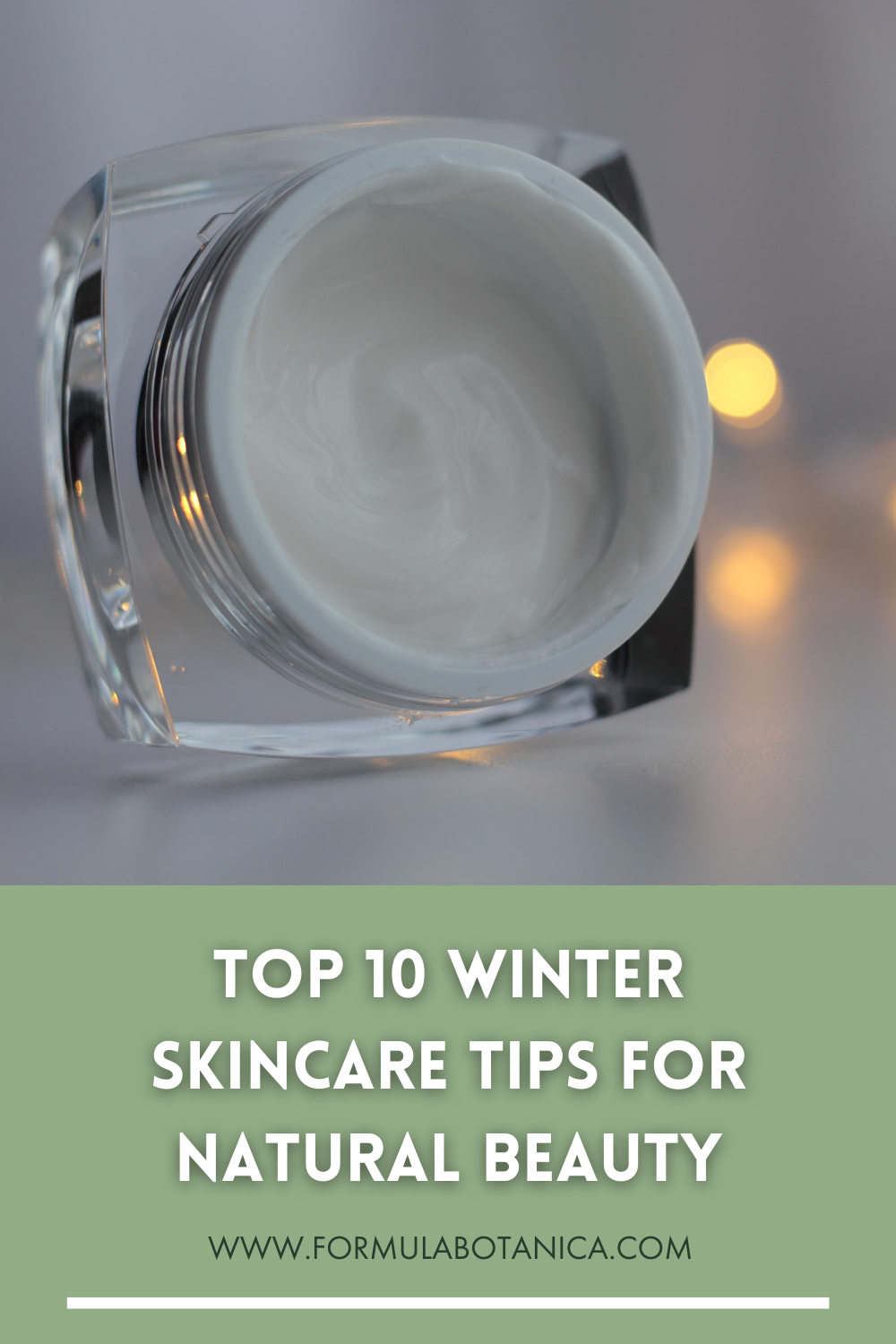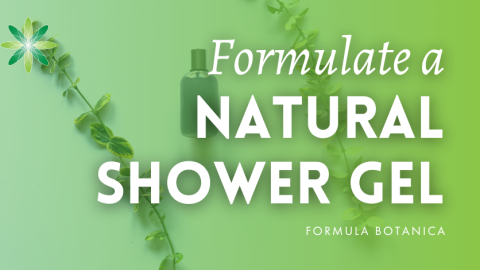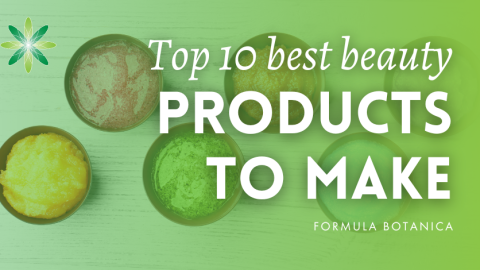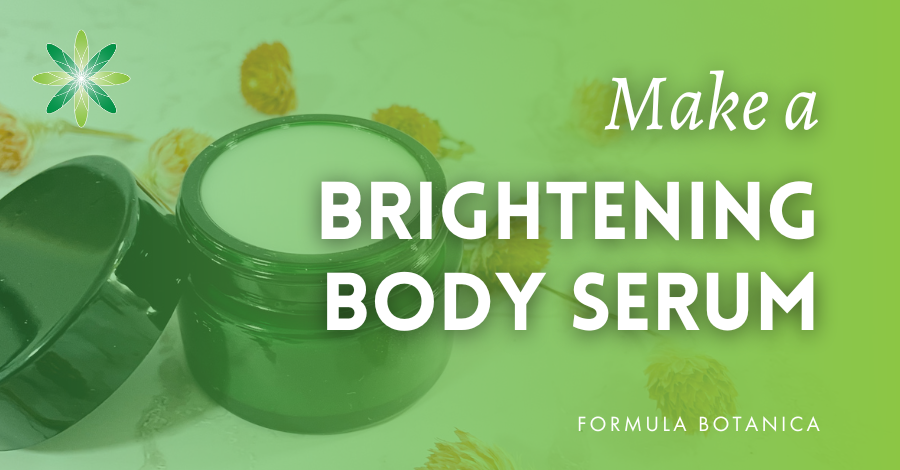Winter skincare should be as different from our summer beauty routines as the seasons are to each other. True or false? While sense dictates that the changing seasons should make us rethink our daily beauty habits, it is likely many of us use the same exfoliators, cleansers, toners and moisturisers all year round. Perhaps in winter we use a little more of one and less of another.
After all, who really clears out their bathroom beauty shelves or makeup bag quarterly to refresh it with new products designed for the next season? We might find it too time consuming to think about a new seasonal routine or shy away from buying new products to keep costs down.
Lower levels of light, less exercise, diets heavier in carb-rich comfort foods and bodies clad in thick layers all compound our winter skincare woes. However, if you play to the strengths of the season and make the most of more enforced time inside to pamper yourself, your skin can not only flourish in winter but also be easier to get into shape for spring and summer.
By understanding how winter affects our skin, we can counteract its negatives and choose appropriate ingredients and products to nourish and protect our face, body and hair keeping them in excellent condition; and, as a result, make us feel good about ourselves in winter too.
This post explains some of the skincare science behind skin’s changing needs for winter as well as offers our top 10 tips for natural winter skincare. They are all easy to implement and won’t require a whole new beauty product range to carry you over to spring. This is a long read. After all, winter is the time to curl up with a good book.
If you prefer to sit back and watch, our Head of Education Ken takes you through our top 10 tips in the video above. You’ll also get to see some of the natural formulations we mention and link to below.
Why do we need a Winter Skincare Routine?
Simply put, you need to change your skincare to suit the seasons just as you change your wardrobe with the changes in climate. The body strives to be in a state of homeostasis, which requires equilibrium of our blood sugar levels, body temperature and concentration of blood among other things. You could compare the mechanism of homeostatis to the sophisticated, digital nerve centre of a building maintenance system.
Our body has its own autopilot ways of maintaining its equilibrium and those kick in when we face temperature changes. Goose bumps and the rising of our hair follicles occur in order to increase and retain our body’s warmth.
Capillaries in the dermis contract (vasoconstriction) with the cold and are less efficient at providing our skin with much needed oxygen and reparative nutrients. On a plus side, this means our bodies conserve more heat. However, in winter months our skin takes a beating and needs some external help to perform its barrier role.
In winter, our skin is exposed to low temperatures and harsh winds that wick moisture from the epidermis. As a result, our skin, particularly that on our face and hands can feel dry and irritated. Hands and lips can suffer from periodic rawness and even severe, painful chapping. Harsh winter weather can also be responsible for aggravating psoriasis in sufferers.
The cold reduces the skin’s lipids – primarily a mix of triglycerides, wax esters, fatty acids and squalene – which form a protective, moisturising barrier found on the epidermis (stratum corneum). When it’s cold, they can be compromised and need help from external moisturising and occlusive, barrier skincare products such as chap sticks for lips and heavier hand creams in order to prevent trans-epidermal water loss (and further dryness).
Heat too, surprisingly perhaps, is a problem in winter as well. Our hot-house interiors reduce the humidity level inside that is so useful at keeping skin moist. Flyway hair and dry skin are caused as much by winter heating as the cold weather outside.
As you can see from this brief overview, it is imperative we make changes to our skincare routine in winter in order to lend a helping hand to our body’s own mechanisms. Below, we outline some nurturing, pampering and nourishing natural winter skincare tips to keep our skin in optimal condition all winter long.
Top 10 Winter Skin Tips
1. Use Nourishing Masks for Winter Radiance
In winter, our facial skin can seem dull and pallid; partly because those capillaries restrict with the cold. A brisk winter walk or other outdoor exercise can put colour back in our cheeks temporarily but even so our faces may still be wan and pale in winter.
As we don’t wish to strip the epidermis of its natural oils at this time of year by using cleansing or buffing exfoliators to slew off dead skin, one of the best ways to both cleanse and bring radiance to our faces is by using a specially-formulated mask. However, we need to choose the right kind of mask. An anhydrous (oil, not water-based formula) to protect and add to our own skin lipids is a good choice.
These more pampering oil-based masks need not be greasy and can still act as cleansers. It is possible to have anhydrous, moisturising masks that also contain micronised, dried particles of beneficial clays and antioxidant-rich superfruit extracts. We’ve a nourishing and cleansing mask formula that is ideal as a winter facial for you to make at home and use for a once-a-week pampering session.
See our post: How to Make a Superfoods Face Mask
2. Go Gentle on the Cleansing in Winter
Swap any harsher, sebum-stripping cleansers and toners for gentler emulsion-based versions. Again, this is to ensure you don’t strip the skin of its lipids nor disrupt the natural biome that is so burdened anyway by winter climates and dry interiors.
Emulsion cleansers come in a variety of forms including gel-to-milk and foaming lotions that are wash off to regular cream cleansers of differing viscosity that can be removed with cosmetic pads or a damp face cloth.
See our posts:
How to Make a Powder to Foam Cleanser
How to Make a Natural Cream Cleanser with PolyAquol 2W – a light, airy cleanser
How to Make a Camellia Cleansing Oil – an oil-to-milk cleanser
How to Make a Facial Cleansing Stick – an oil-based, balm cleanser in a twist-up dispenser
Another useful product for gentle cleansing is micellar water. You may have considered it part of a quick, all-in-one cleanse, tone and moisturise routine in hotter months or as an ideal option when traveling. However, micellar waters are effective in a winter skincare routine because their small oil content does the cleansing while their larger water proportion is pH neutral on the skin and can help hydrate. After using a micellar water, moisturise while your skin is still damp so as to lock the water in underneath.
See our post: How to Make a Micellar Water
3. Wash in Luke-warm Water
We don’t mean take a tepid or cold shower, though certainly feel free to if you dare. It is tempting in colder weather to enjoy a really hot shower and wash our hands and faces with a good splash of hot water. However, when your hands are under siege from harsh weather, as we said above, they are drier and more prone to chapping and if extremely aggravated, they can from one day to the next become very raw and sore especially between the fingers. Wash your face and hands in tepid water to avoid stripping them of their lipids and moisturise them immediately.
Cooler water at the start and end of a shower – intermittently with warmer water – can help increase overall circulation by stimulating the blood flow in the skin’s capillaries. If you aren’t keen on lingering in the bathroom on colder days, take a look at in-shower lotions which can speed up your body care. In-shower lotions are emulsions applied on damp skin, literally in the shower after washing, and help lock in residual water on the skin.
See our posts:
How to Make a Nourishing Hand Balm
How to Make a Vitamin C Anti-ageing Hand Cream
How to Make a Natural In-shower Lotion
4. Give your lips extra TLC
If you are a regular lipstick wearer, in theory your lips should be better protected as you will be applying a lipid layer. However, do you know what ingredients go into your favourite lippy? See our shownotes and podcast on green makeup for some eye-opening background on mainstream colour makeup. Lipsticks are typically composed of petrolatum and mineral oils along with natural soft and hard waxes and oils like coconut, jojoba and castor, as well as lanolin and of course colour pigments. Petrolatum acts as an occlusive, barrier layer to reduce moisture loss from the skin but has no value as a nurturing, nourishing lipcare ingredient.
At Formula Botanica, we are creating a colour cosmetics course for the future because we know that makeup and especially lip care can be colourful and nourishing if made from natural oils, waxes and extracts from various fruits and berries and other botanicals in powerered form and as glycerites. These ingredients all have beneficial properties and are great additives to a homemade lip balm.
See our post: 38 Natural Colourants for Organic Skincare
Colour aside, lips in winter could do with some TLC and maintenance before we apply an outer protective and nourishing layer. They can get dry and develop little loose stringy bits of skin and feel rough. A lip scrub to buff your lips gently as well as moisturise will give you a smooth base on which to apply that colour layer.
See our posts:
How to Make a Whipped Lip Scrub
How to Make an Amazonian Lip Balm
6 Vegan Waxes for Organic Cosmetic Formulations – useful list of waxes that can be used in lip care products.
5. Use Hydrating Face Serums
It’s a natural choice to turn to heavier, more oil-rich moisturisers in winter to aid both our hands and face. Their nourishing emulsions with heavier textures are ideally suited to protecting our skin from winter elements.
However, use a serum under your regular winter moisturiser to give your face a nourishing treat to beat the winter blues. There are no one-size-fits-all serums so do your homework on which type and what active ingredients can supercharge your skin. Serums generally target specific skin issues or types, such as dryness and hyperpigmentation or mature skin. They provide moisturising and barrier-strengthening properties to the skin, as well as offering antioxidant and reparative properties.
The beauty of serums is that they come in numerous forms from oils and gels to whisper-thin emulsions and even as solid, pressed serums that melt on contact with the skin. It’s easy to find one to suit not only your skin’s needs but also to work in synergy with your moisturiser.
See our posts:
5 Types of Organic Facial Serum Formulations
How to Make a High-performance Vitamin E Serum
How to Make a Hydrating Rose Facial Serum
How to Make a Caffeine & Pea Under-eye Serum
How to Make an Organic Pressed Serum
6. Combat Dry Interiors
We tend to think of humidity as a sticky, damp and unpleasant aspect of a winter climate, and we certainly don’t wish to see evidence of it in our homes in the form of rising damp or mould. However, overly hot and dry interiors in winter months are no friend to skin. A certain amount of moisture in the air will help our skin to retain its own moisture rather than have its hydration wicked out.
You can find portable, both floor and table-top, digital room humidifiers that provide a cool, fine, invisible mist and run efficiently and quietly in the background monitoring the air and adjusting output to create optimal levels of humidity. These are ideal in bedrooms or other rooms you spend a lot of time. Major online retailers like Amazon have a lot to choose from to suit your price and needs.
7. Don’t Forget your Feet
While our feet are rarely exposed to the elements in winter, they may be forgotten in our beauty routines and prone to being neglected from autumn through to spring. If not given regular maintenance through exfoliation and moisturising, they can develop callouses and hard, dry skin which can be painful. Making time for your feet can be a welcome winter weekend ritual rather than a chore, so give your feet some TLC in winter months and you will save time when it comes to perking them up for display in summer.
Make up the two formulas we suggest below for a total home foot spa session. Combined, they exfoliate and then nourish and moisturise your feet.
See our posts:
Apple & Spice Whipped Foot Scrub
How to Make Natural Foot Mask for Lazy Sunday Mornings
8. Protect your Hair
If you thought hair only gets a beating in summer with sun, sea, salt and heat, think again. Winter weather brings a whole new level of haircare with it if you wish to maintain a healthy shine in colder months. Winter deals hair a blow with its cold winds and those dry, hot interiors.
Some easy, commonsense ways to protect your hair in winter include wearing a hat and ensuring you keep up regular trims to remove split ends. Be aware that hats can aggravate the scalp too though and lead to a build up of sweat. Ideally, use silk-liked hats to help the scalp breathe better. Obviously, try not to go out in the cold with wet hair. Icy weather can freeze the ends of moist hair and create split ends.
Use mild shampoos so as to not strip protective oils and wash hair in warm, not hot water. Extra conditioning of the hair is vital in winter. Try out our formulas below for a deep conditioner and a hair mask. Look out also for pre-shampoos that contain rich oils and butters to apply to wet hair before cleansing. Apply them, wrap hair in a warm towel and let them work their magic while you soak in a pampering bath.
See our posts:
How to Make an Exfoliating Pre-shampoo
How to Make a Natural Shampoo with Mint & Rosemary
How to Make a Deep Conditioning Hair Mask
How to Make an Organic, Natural Hair Conditioner
10 of the Best Haircare Herbs
10 Best Carrier Oils for Winter Skin- & Haircare
Green Beauty Bloggers’ Verdicts on Natural Haircare
9. Remember that Body Care isn’t only for Summer
It is tempting to speed up showering or bathing in winter, especially if your home bathroom is chilly. However, don’t forget that skin health is more than just about a glowing face. Dry skin can be prevalent on shins, feet and elbows, which while hidden from view most of the winter, it can be cause for concern and take time to remedy as spring approaches. Plus, winter can be party season and occasionally, we need to bare more and may regret not exfoliating, body brushing and moisturising our bodies more often.
Scrubs can be more than exfoliators slewing off dry, flaky skin. They can stimulate circulation with use of ingredients such as mineral salts and caffeine to work on reducing the appearance of cellulite. Body polishes work in a similar way to scrubs but have finer particles and are designed to leave a moisturising film even when washed off. After a polish, your skin should feel silky smooth.
Body butters come into their own in winter months to provide excellent skin hydration. If you prefer lighter body butters, choose whipped formulas that are less heavy and greasy in feel. Apply on damp skin to lock in moisture after showering. We’ve a lot of fun, easy formulas to try at home to combat dry and dull skin that is several months away from seeing daylight and breathing fresh air. We also have some wonderful suggestions for natural waxes to enrich your body butters.
See our posts:
How to Make a Black Salt Body Scrub
How to Make a Green Tea & Lemon Body Polish
How to Make a Whipped Tuberose & Neroli Body Butter
How to Make a Butter Scrub
How to Formulate a Green Tea & Cocoa Body Balm Stick
10. Enjoy the Great Outdoors in Winter too
Our final tip is a reminder to do as they do in Nordic countries and get outside, almost whatever the winter weather, for some much-needed exercise and fresh air. Dressed for the cold, and with your skin protected and nourished using some of our product formulations above, you can really do wonders for your skin – and well-being – with exercise, even if it’s just a short, brisk walk. The capillaries will enlarge and work harder bringing oxygen with its nutrients to the outer layers of skin to bring a healthy-looking glow. Remember, good skincare is more than about products alone. You’ll feel better getting out and about, and your skin will thank you for the effort. So prise yourself away from the heat indoors and try out Nordic beauty’s easiest, cheapest secret tip.
See our post on Nordic beauty which includes the low-down on Nordic countries’ views on healthy outdoor lifestyles as well as a list of fabulous beauty oils and active ingredients:
FAQS on Winter Skincare
How to take care of dry skin in winter
Dry skin is common in winter as a result of harsh, cold wicking winds outdoors and also drier, heated indoor environments. Top tips to care for dry winter skin are to protect, nourish and not neglect it. Use thicker-textured natural oil emulsions as occlusive barriers to prevent trans-epidermal water loss (TEWL), use active, nourishing facial serums and masks and don’t neglect unseen areas such as feet and legs that can get flaky hard skin.
How to take care of your face in winter
In winter, you need to swap out your facial skincare products for those that won’t strip away natural facial oils and affect your skin biome. Wash your face in tepid water and use gentle, light oil-based or gel-to-milk cleansers or micellar waters. Apply nourishing serums under your moisturiser to give skin an extra boost for radiance. Apply richer day and night creams to give your face deep nourishment and to act as a barrier to prevent the skin’s water loss.
How to take care of your body in winter
Dry skin can be common on shins, feet and elbows in winter months and be cause for concern and take time to remedy as spring approaches. Use body scrubs to exfoliate and slew off dry, flaky skin as well as stimulate circulation. Body polishes with their finer particles leave a moisturising film even when washed off. Body butters provide excellent skin hydration in winter. If you prefer, choose whipped formulas that are less heavy and greasy. Apply on damp skin to lock in moisture after showering.
Where can I learn to formulate natural skincare products?
Join us at Formula Botanica, where tens of thousands of students and followers take our free and paid online courses to learn how to formulate organic skincare and haircare for themselves or to sell.
FREE TRAINING
Learn how to become an
Organic Skincare Formulator
FREE TRAINING
How to become an
Organic Skincare Entrepreneur
FREE TRAINING
How to become an
Organic Skincare Entrepreneur
Leave us a comment

Liz was Formula Botanica’s Content Coordinator between August 2020-2024. Liz worked as a professional blogger, journalist and site developer for many years and was also part of the Formula Botanica student community. Read more about the Formula Botanica Team.



























